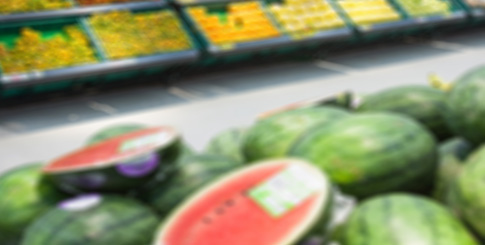Amazon may spur more retailers to improve their customer relationships. “The positive is Amazon is forcing retailers to better focus on their target niche,” Grinstead explains, “to begin providing the experience today’s consumers are looking for.”
Produce, Convenience, and Choice
Since Amazon’s claim to fame is online sales, some observers question whether fresh produce will ever follow in the footsteps of other retail or food categories.
“All supermarkets should be mindful of and a little threatened by the move to ecommerce,” asserts McLaughlin. But, he adds, “The dry grocery bins will be more impacted by Amazon than fresh foods. Absolutely, there will be a move online, but nowhere near the extent of dry groceries. Consumers know what they’re getting when they buy a liter of Diet Coke online, but not with a tomato or an avocado or a cantaloupe.”
Battling for online produce dollars
McLaughlin notes there will, however, be some migration. “Amazon has not yet figured out how to do fresh in general and produce in particular, but its focus on physical retailing shows it’s committed to getting there.
“Peapod has demonstrated that consumers are comfortable buying produce online; when Amazon figures this out, more consumers will quickly shift the majority of their grocery shopping to Amazon,” he predicts.
The retail landscape supports the idea that the produce category may be less impacted by the move to online than grocery as a whole. “In the past few years, some of the heaviest new bricks-and-mortar growth has been in stores that focus on fresh produce,” reports Livingston. “The growth in fresh stores such as Lucky’s Market, Fresh Thyme, and Sprouts continues.”
Livingston believes the jury is still out on whether consumers will want to purchase produce online rather than picking it out personally. Over the next few years, we’re going to see supermarkets closing by the bushel, most likely financially distressed chains, along with mediocre independents.
“Amazon will gain a lot from the dry grocery business, and stores that focus on fresh perishables will gain in the bricks-and-mortar segment,” Livingston adds. The latter, he reports, tend to average about 35 percent of their sales in produce, versus 10 to 15 percent for the average chain super-market and about 20 percent for Whole Foods.
“The easier route to online is the nonperishable product,” agrees Larkin. “AmazonFresh left some markets, which is probably an indication there are some issues.” Indeed, last November Amazon discontinued its AmazonFresh service in a number of communities in nine states, mostly in smaller markets.



